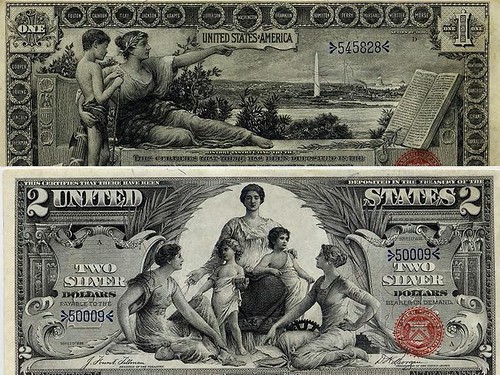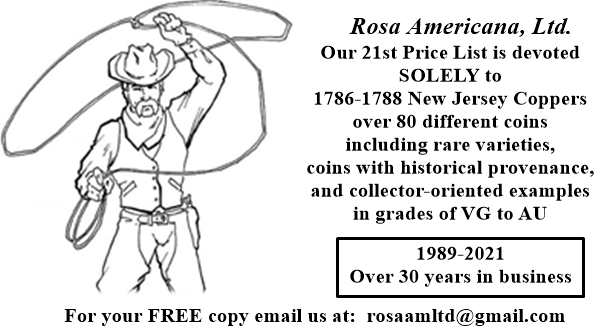
PREV ARTICLE
NEXT ARTICLE
FULL ISSUE
PREV FULL ISSUE
MONEY DESIGNS AND SOCIAL MOVEMENTSHistorian Peter Y.W. Lee published an article in Smithsonian magazine connecting paper money designs to social movements throughout U.S. history. Thanks to David Gladfelter for passing this along. -Editor
Momentum for the This is not the first attempt to use currency to forge a national identity by commemorating a shared heritage. An earlier experiment 125 years ago attempted to do the same. But—spoiler alert—it failed in every sense. The United States introduced silver certificates in 1878, at a time when the meaning of money was up for grabs. In the late 1890s, the nation was in the early process of transforming from a rural agrarian society into an industrialized, urbanized empire teeming with immigrants. But growing pains brought an identity crisis; new peoples, cultures, technologies, and work habits challenged the status quo, exposing political, social, and class conflicts that came to a head in the 1896 presidential election.
The free silver movement—to allow for unfettered silver coinage alongside the gold standard—reflected these divides. Proponents, many of whom were Western farmers and miners, believed free silver would expand the money supply for the poor. But gold supporters—often situated in Eastern metropolises—saw free silver as an attack on the country’s financial lifeblood, their own fortunes, and their class standing as sophisticated, urbane elites. The Secretary of the Treasury at the time, John G. Carlisle, supported gold, but recognized silver as
The Bureau of Engraving and Printing commissioned publicly acclaimed muralists William H. Low, Edwin Blashfield, and Walter Shirlaw, who had decorated government buildings and represented American art in international expos, to design the denominations.
Low glorified a collective American past by portraying the Constitution as a civics lesson for the nation’s children. In his $1 certificate, entitled History Instructing Youth, Low depicted the Washington, D.C., skyline behind
The theme of youth and citizenship reflected the free silver position. Coin’s Financial School, a popular booklet starring a young financier named Coin, differentiated democratic silver from aristocratic gold:
While the $1 certificate glorified the past, the $2 and $5 certificates highlighted technological and national progress. Edwin Blashfield’s Science Presenting Steam and Electricity to Commerce and Manufacture was a paean to industrialization.
To read the complete article, see:
Wayne Homren, Editor The Numismatic Bibliomania Society is a non-profit organization promoting numismatic literature. See our web site at coinbooks.org. To submit items for publication in The E-Sylum, write to the Editor at this address: whomren@gmail.com To subscribe go to: https://my.binhost.com/lists/listinfo/esylum All Rights Reserved. NBS Home Page Contact the NBS webmaster 
|

